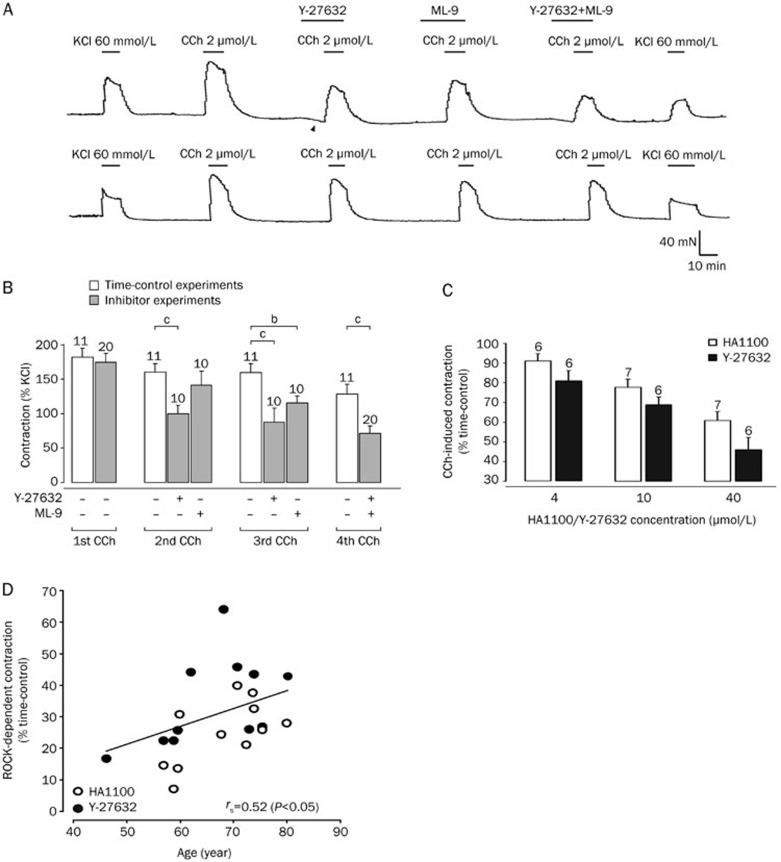Figure 3.
Carbachol-induced contractions are reduced by Y-27632 and ML-9, and Rho kinase-mediated contraction is age-dependent. (A) The upper trace (starting at 7 h following cystectomy) shows contractions induced by carbachol (2 μmol/L) in a human detrusor specimen that were reduced by both the ROCK blocker Y-27632 (10 μmol/L) and the MLCK blocker ML-9 (10 μmol/L). Note the reduction of the basal tone (arrow heads) indicating kinase activity at rest. The lower trace shows time-control experiments of another specimen from the same patient demonstrating only little tachyphylaxis upon repetitive carbachol applications. Application of KCl (60 mmol/L) was used at the beginning and at the end of the experiment to verify stable recording conditions. (B) Carbachol-induced contractions (in % of initial response to KCl 60 mmol/L) showed little tachyphylaxis (time-control experiments), but were significantly reduced following Y-27632 or ML-9 (total number of specimens: n=31 of 5 patients). bP<0.05, cP<0.01. (C) Carbachol-induced contractions following ROCK inhibition (in % of the time-matched control response) was dose-dependent for both Y-27632 and HA1100 (total number of specimens: n=94 of 7 patients). (D) The carbachol-induced contraction following ROCK inhibition with either HA1100 (10 μmol/L) or Y-27632 (10 μmol/L) was significantly age-dependent (Spearman's rank correlation coefficient of 0.52, P<0.05). In this panel, data from Figures 2B and 3B have been included (total number of patients: n=16).

